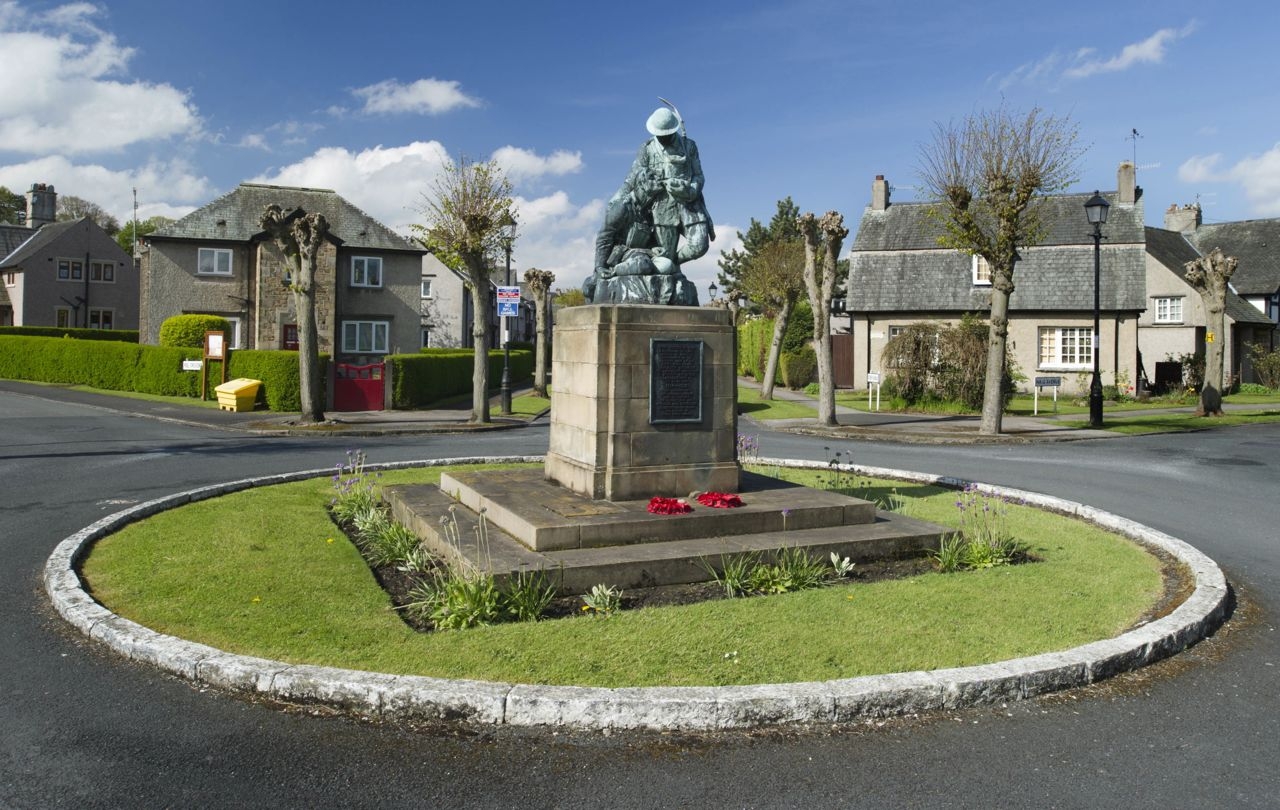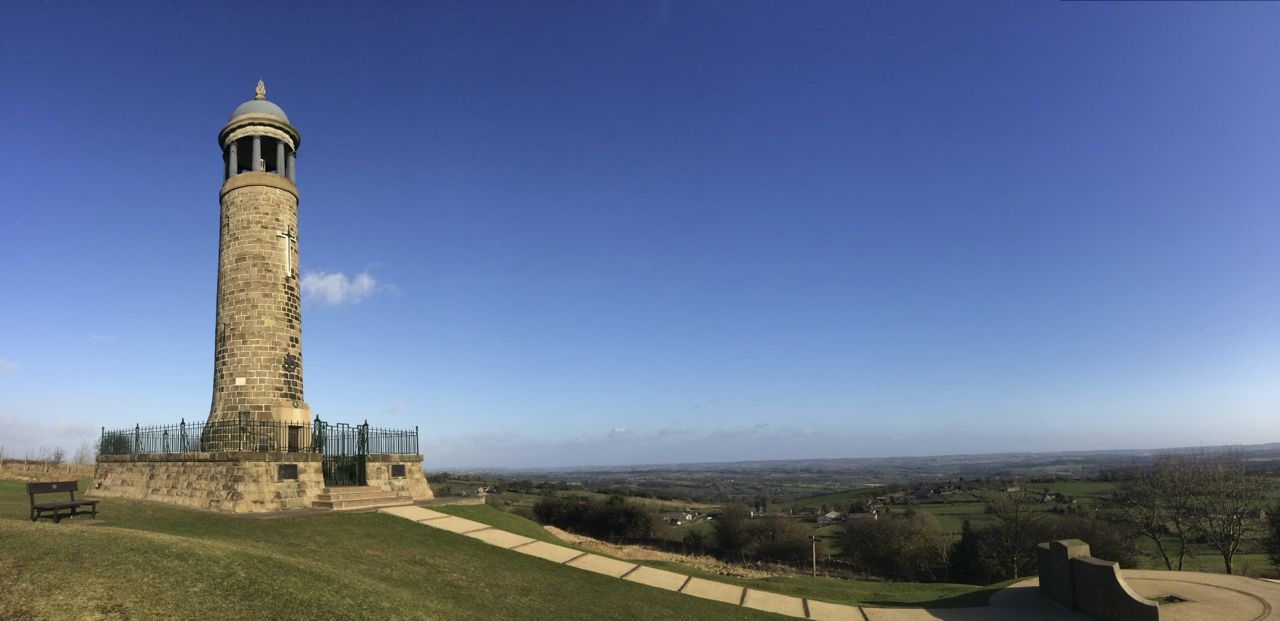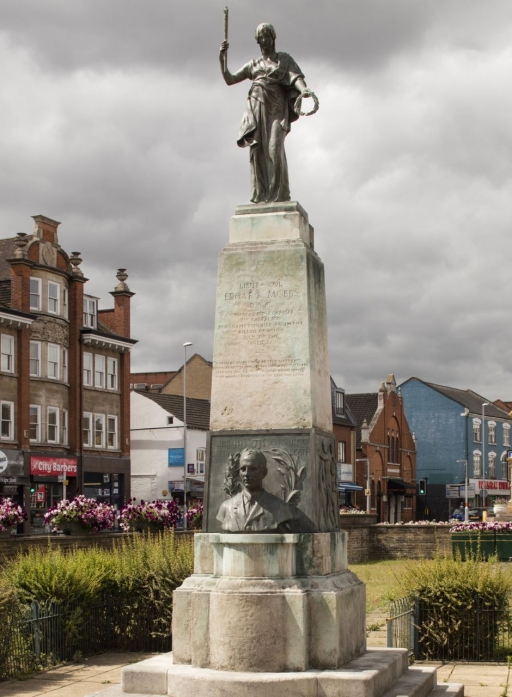A memorial to an England rugby star and a monument in a village built for disabled WW1 veterans are among 13 English war memorials newly listed for conservation, or upgraded, to mark the Battle of Passchendaele Centenary.
Protected on the advice of Historic England, they are reminders of the losses suffered by cities, towns and villages across the country during the Ypres offensive from July-November 1917.
Five new listings include:
Edgar Mobbs War Memorial, Northampton – a rare example, says Historic England, of a public war memorial dedicated to an individual.
Edgar Mobbs was a charismatic English rugby union international who captained the Northampton side in 1907-1913.
When the First World War broke out, 32-year-old Mobbs was refused a commission because of his age. Undeterred, he raised his own ‘Sportsman’s Battalion’ of 264 men (Mobbs’ Own) in the Northamptonshire Regiment.
Edgar Mobbs fought at the Battles of Loos, Somme, Arras and Messines. He was killed in action on 31 July 1917, the first day of the Third Battle of Ypres, also called Passchendaele. His body was never found.
Hamsterley Colliery War Memorial, County Durham – commemorates in particular Major Arthur T. Watson, whose family ran the local coal mine.
A veteran of the Somme and Messines, 47-year-old Watson died during the opening days of Flanders attack in August 1917. He’d been given a transfer home and was saying goodbye to his fellow soldiers when a German shell exploded, fatally wounding him.
The inscription on Hamsterley Cross reads: “The workmen of this Village wish to place on record their sorrow at the loss of their friend and Employer whose memory they will hold in affection for all time.”
Eight newly-upgraded memorials include:
Westfield Memorial, Lancaster – is the focal point for a village built to provide accommodation and employment for disabled veterans, primarily those who’d served with the local regiment (the King’s Own Royal Lancasters).
 Westfield Village Memorial, designed by a local art teacher, shows a soldier helping a fellow soldier in need. The village streets radiate from it (Photo © Historic England Archive DP156627)
Westfield Village Memorial, designed by a local art teacher, shows a soldier helping a fellow soldier in need. The village streets radiate from it (Photo © Historic England Archive DP156627)
Conceived as a tribute to the sacrifices of the Great War, Westfield Memorial Village was opened in 1924 by Field Marshal Earl Haig, the British commander-in-chief behind the controversial Passchendaele offensive. The village still operates as a charity and home for ex-members of the armed forces.
Crich Stand Tower – situated on a hill, the memorial also serves unusually as an ‘inland lighthouse’, commanding spectacular views across the counties of Derbyshire and Nottinghamshire.
Historic England describes it as a poignant reminder of the considerable sacrifice made by soldiers of the Sherwood Foresters, whose First World War actions included Passchendaele.

The Crich Stand Tower – among the WW1 memorials given added protection as ‘particularly important buildings of more than special interest’ (Photo: Centenary News)
The Third Battle of Ypres, also known as Passchendaele after its final phase, resulted in more than 500,000 casualties – troops killed, wounded or missing – on both sides.
Roger Bowdler, Director of Listing at Historic England, said: “Passchendaele was a truly grim affair, waged over three muddy, bloody months. These newly listed and upgraded memorials are just some of the tributes to the losses of so many.”
Full details of the memorials, newly listed or upgraded by the UK government on the advice of ‘Historic England’, can be found on the Historic England website.
Also in Centenary News:
Tyne Cot centenary service commemorates Passchendaele loss and sacrifice.
‘From Parsonage to Passchendaele’ – Remembering a British nurse under fire in Flanders.
Source: Historic England (additional information, Major Arthur Watson – Commonwealth War Graves Commission)
Images: © Historic England Archive (Edgar Mobbs Memorial,Westfield Memorial); Centenary News (Crich Stand Tower)
Posted by: CN Editorial Team
